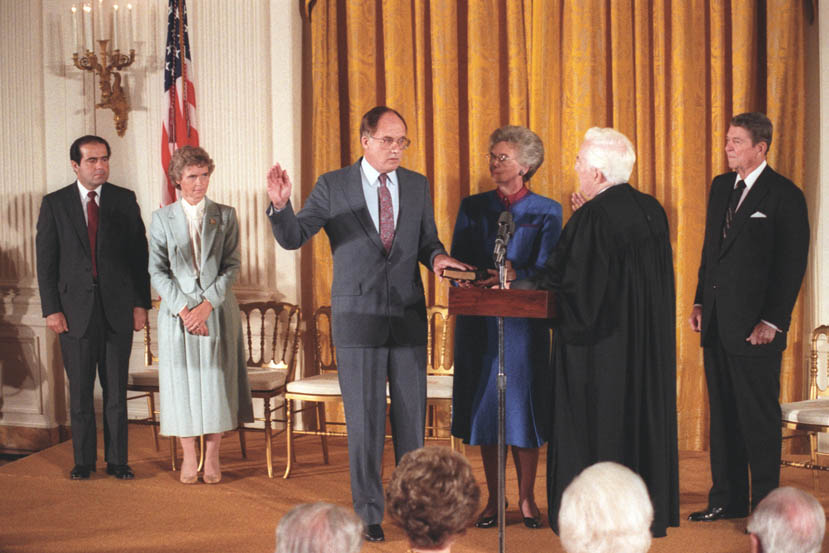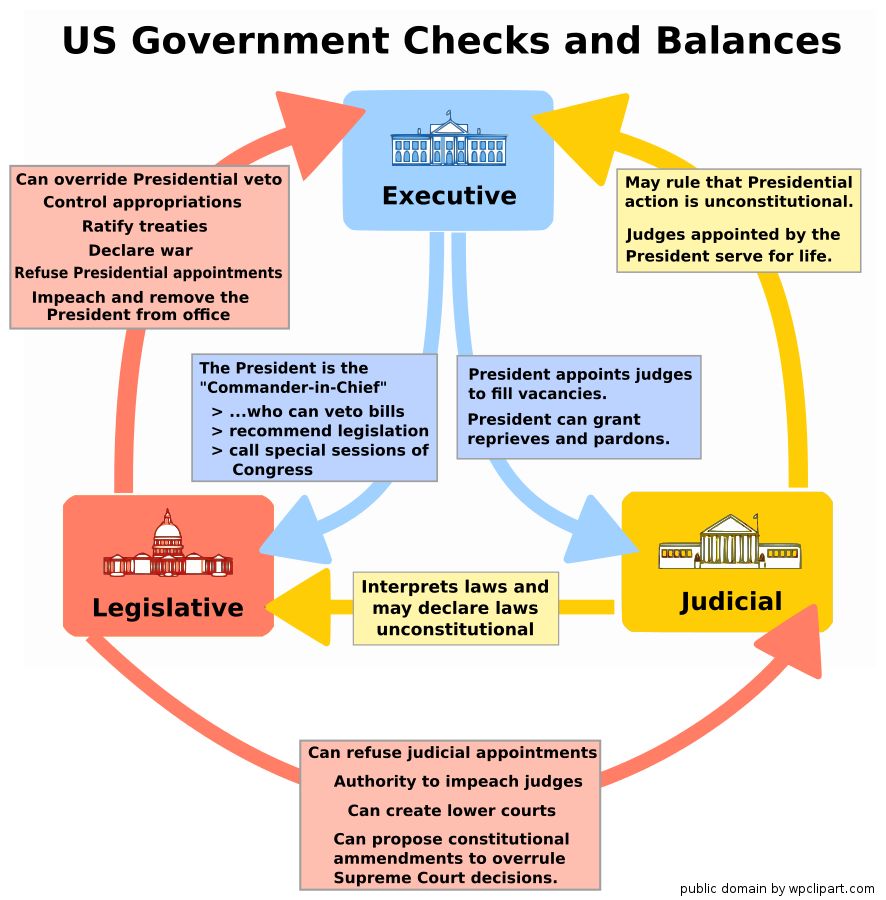Learn
To access the materials on Discovery Education website, you will need to log in. View the login instructions.
What is a collaborative project?
A collaborative project can be defined as a project that enables students to work together to create a product of substance and develop problem solving skills (Payne & Monk-Turner, 2006). Collaborative projects not only provide opportunities for authentic learning and real-life applications, they are now required for ACCESS courses.
In other words, the collaborative project is a project that you will complete with one or more other students, working together to reach a specific goal. Throughout this course, you have already interacted with one another in discussions on various topics. Your teacher will assign you to a group with 3 to 4 members and will assign you a court to research. Groups will be posted to the 6.01 Project Topic Discussion. Think about which topic and role sounds most interesting to you and make suggestions to your group members via the discussion. By the end of this lesson, you will have selected a topic related to your group's court and a group role before submitting them to your teacher on the form provided.
What are the expectations and requirements?
You will also want to know what you are expected to do for this project. Here are the requirements:
-
Project topics and individual research role
Rough draft of PowerPoint presentation
A PowerPoint presentation with 10 to 15 slides total
-
Part 1 The first portion will contain a title slide followed by the research from each group member on their assignment (individual research should include at least 2 to 3 slides)
Part 2 The final slide will list your sources in MLA format three (or more). Make sure to follow these MLA Citation guidelines.
What are the research topics?
The history of the Supreme Court can be studied according to courts or cases. The Court has traditionally been named after the Chief Justice on the bench during a particular period. Later in the unit, you will study Supreme Court landmark cases, or cases that establish an important new legal principle or change the interpretation of an existing law. There are a few Supreme Court Chief Justices whose courts have had a major impact on our government due to the number and/or significance of landmark decisions handed down in their Court. Your group will be assigned one of the following Courts and will research the Chief Justice and landmark cases:
-
Marshall Court (1801-1836)
Warren Court (1953-1969)
Burger Court (1969-1986)
Rehnquist Court (1986-2005)

William Rehnquist takes the oath as Chief Justice from retiring Chief Justice Warren E. Burger in 1986, as President Ronald Reagan looks on. |
Where can I find more information?
Study the court cases below. Each case was selected because of its long term impact on American society.
-
Marbury v. Madison
McCulloch v. Maryland
Gibbons v. Ogden
Wallace v. Jaffree
Bush v. Gore
Texas v. Johnson
Tinker v. Des Moines
Reno v. ACLU
Brown v. Board
Miranda v. Arizona
Gideon v. Wainwright
U.S. v. Nixon
Wyatt v. Stickney
Powell v. Alabama
Roe v. Wade
What will you need to include?
Your group will research the court you have chosen and create a collaborative PowerPoint presentation worth a total of 125 points.
Each group should research the following topics for their court.
-
Summary of the key cases in the period (2 or 3 cases depending on the number of members in your group) including a breakdown of the votes and the outcomes.
Biography research on the Chief Justice including an assessment of the judicial philosophy over that period
Overall conclusions about the importance of that court.
Two to 3 group members will research landmark cases of the court.
One group member will research the Chief Justice.
All group members will contribute to overall conclusions about the importance of the court and assessment of its judicial philosophy. Each member will also help with the set-up and review of the PowerPoint presentation.
Your project will be due at the end of the unit.
Project Roles
Each group member must select one of the following unique roles:
-
Editor-in-Chief: Responsible for proofreading and compiling the group's work into a final PowerPoint project. The Editor-in-Chief should be someone who enjoys leadership and meets deadlines. The Editor-in-Chief will be responsible for research on his or her individual topic; however, he or she will be exempt from the research on "Judicial Philosophy" and "Overall Importance of the Court" due to extra duties related to compiling individual work into a group presentation.
Associate Editor: Responsible for checking the layout for the PowerPoint Slides and assisting the Editor-in-Chief. The Associate Editor should be someone who is organized and has a good sense of design. Groups with four members will have two Associate Editors.
Discussion Leader: Responsible for communication with the teacher throughout each lesson and for leading all of the group discussions. The Discussion Leader should be someone who feels comfortable communicating with the teacher and with peers.
Article III of the Constitution gives judicial power of the United States to the Supreme Court and any lower courts that may be established by Congress. Our judicial branch is comprised of two court systems: federal and state. The Federal Court System deals with the constitutionality of a law. The U.S. Federal Courts include the Supreme Court, U.S. Courts of Appeals, U.S. District Courts or Trial Courts, and other special courts. The State Court System can deal with anything from criminal cases to family law cases.
|
The structure of the United States federal court system. |
Read Why Two Court Systems to learn more about the State and Federal Court System.
The Supreme Court and Judicial Review
While Article III of the Constitution gives Congress the authority to create the lower federal courts, the Constitution specifically creates only one court, the Supreme Court of the United States. The Supreme Court is the highest court in the country and its main responsibility is to interpret the laws. In other words, the Court's number one job is judicial review which is the power to decide if a law or government action violates the constitution.
The power of judicial review was established with the landmark case Marbury v. Madison in 1803. Because of this power, the Supreme Court plays the vital role of referee between the other branches of the Federal government and between federal and state governments. The Supreme Court is the final authority on constitutionality and the meaning of the Constitution.
Watch Judicial Review: The Power to Declare Laws Unconstitutional (2:01) to learn more.
The power of judicial review is a vital aspect of the system of checks and balances. The power of both the executive and legislative branches of government is checked by the judicial branch's authority of judicial review. In other words, the judicial branch can declare laws made by Congress and actions of the President unconstitutional. In addition, judges appointed by the President serve for life.
|
The system of checks and balances in the federal government. |
Read The Supreme Court to learn more about the highest court.
Limits on Judicial Power
While judicial review provides the judicial branch with a powerful check on the other branches, the Constitution also provides the other branches the means to limit the power of the courts.
The judicial branch is limited by the legislative branch's power to:
-
refuse judicial appointments.
impeach judges.
create lower courts.
propose constitutional amendments to overrule Supreme Court decisions.
control the Supreme Court's budget.
In addition, the judicial branch is limited by the President's power to appoint judges. The President also has the power to grant reprieves and pardons to those who have been convicted of federal offenses.
Watch Other Supreme Court Responsibilities (2:24) to learn more about checks and balances of the Supreme Court.
Though there are a few exceptions, most cases do not start in the Supreme Court. The Court can have original jurisdiction in cases involving two or more states and ambassadors or foreign officials. However, Supreme Court cases usually start in a lower court and are appealed, or tried again, to a higher court.
The Federal Court System
The higher courts are called appellate courts in the state court system. The federal court system has lower courts called U.S. District Courts and higher courts called U.S. Court of Appeals. If the higher and lower courts agree on the decision and the case involves federal or Constitutional law, the losing party may ask the Supreme Court to grant a writ of certiorari, an order to review the case.
|
The structure of the federal court system of the United States. |
Selection of Supreme Court Cases
The Supreme Court only hears about 100 out of the approximately 8,000 cases that are sent each year. So, how does the Court decide which cases will be placed on the docket, or schedule of cases to be heard?
At least four of the nine Supreme Court Justices must decide to hear a case based on whether it is worthy and involves a pressing constitutional issue and its possible impact on lower courts. After the Court decides to hear a case, the Justices read and study the briefs, or written summary of arguments presented by each side.
Watch The Supreme Court (2:01) to learn more.
Arguing Cases Before the Supreme Court
After the Justices have studied the briefs, the lawyers from each side are allowed one-half hour to present their oral arguments. Justices may interrupt oral arguments at any time to ask probing questions.
After oral arguments, the Chief Justice leads the other Justices in conference, or private meeting, to discuss the case. It takes a majority opinion, or at least five of nine Justices, to represent a ruling in a case. The Chief Justice decides who will write the opinion if he is in the majority. However, if the Chief Justice is in the minority, the Justice in the majority with the most seniority on the Court decides who will write the opinion.
The Supreme Court convenes, or meets, beginning on the first Monday of October and decides all cases argued during a term before the end of June when they recess for the summer.
Watch Supreme Court Cases (2:22) to learn more about how cases are argued before the Supreme Court.
Watch The Almost Painless Review: The Judicial Branch (1:06) to review what you have learned about the Judicial Branch.
Read Visitor's Guide to Oral Argument to learn more.
Watch Choosing & Arguing Supreme Court Cases (1:55) to review what you have learned about the Judicial Branch.


